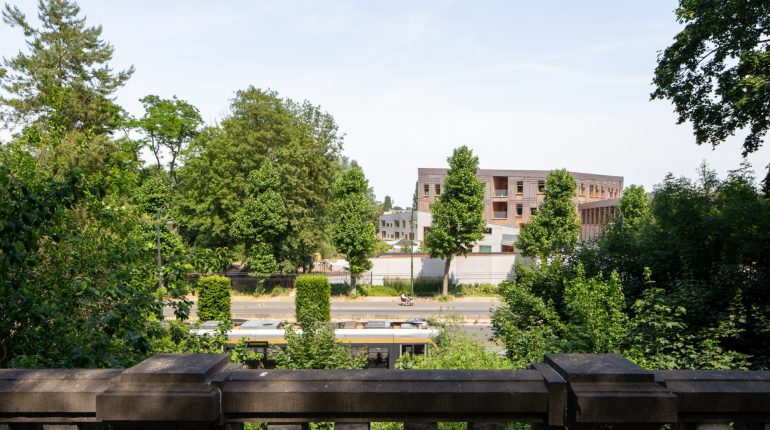The Van Praet Bridge, gateway to Brussels, is often associated with traffic news when it comes to alerting listeners to the presence of traffic jams. But change is imminent! Indeed, the infrastructure node formed by the Avenue Van Praet and the Avenue des Croix du Feu will, in the future, look more like an urban boulevard. This transition is an opportunity to think about improving the quality of life of the surrounding urban fabric.
It is on a site of approximately 27 hectares located near this node that the City of Brussels is planning a large-scale program, including a secondary school, a daycare, facilities, and the creation of a minimum of 5 hectares of green spaces accompanied by a housing. All this while reconnecting the residential area of Neder-Over-Heembeek to the canal and its industrial district.
This new city district within the 20th century crown, which is intended to be exemplary and sustainable, will give a new face to the city entrance of Neder-Over-Heembeek, while at the same time blurring the many urban barriers that exist there.
However, it is not a question of starting from an empty page. Proof of this are the many projects and studies that concern this high-potential area, such as the Landscape Quality Plan (BKP), the study for the redevelopment of the BRYC (Brussels Royal Yacht Club) site, the mobility study for the Canal Nord-A12 or the new tramway to Neder-Over-Heembeek.
The City of Brussels, which has already drawn up an indicative Planning Scheme for the Regional Interest Zone No. 4 – Van Praet Bridge, would therefore like all these preparatory works and their ambitions to be translated into a masterplan that will frame the future developments of the zone, as well on the short as long-term.
This is therefore an excellent opportunity to create a new type of airy urbanity that overlooks the infrastructural character of the area while at the same time strengthening the Neder-over-Heembeek district in a sustainable manner. The programme envisaged for this area – secondary school, day-care centre, housing, green space – will have to be tested with the help of the Research by design as well as through an environmental impact study.
